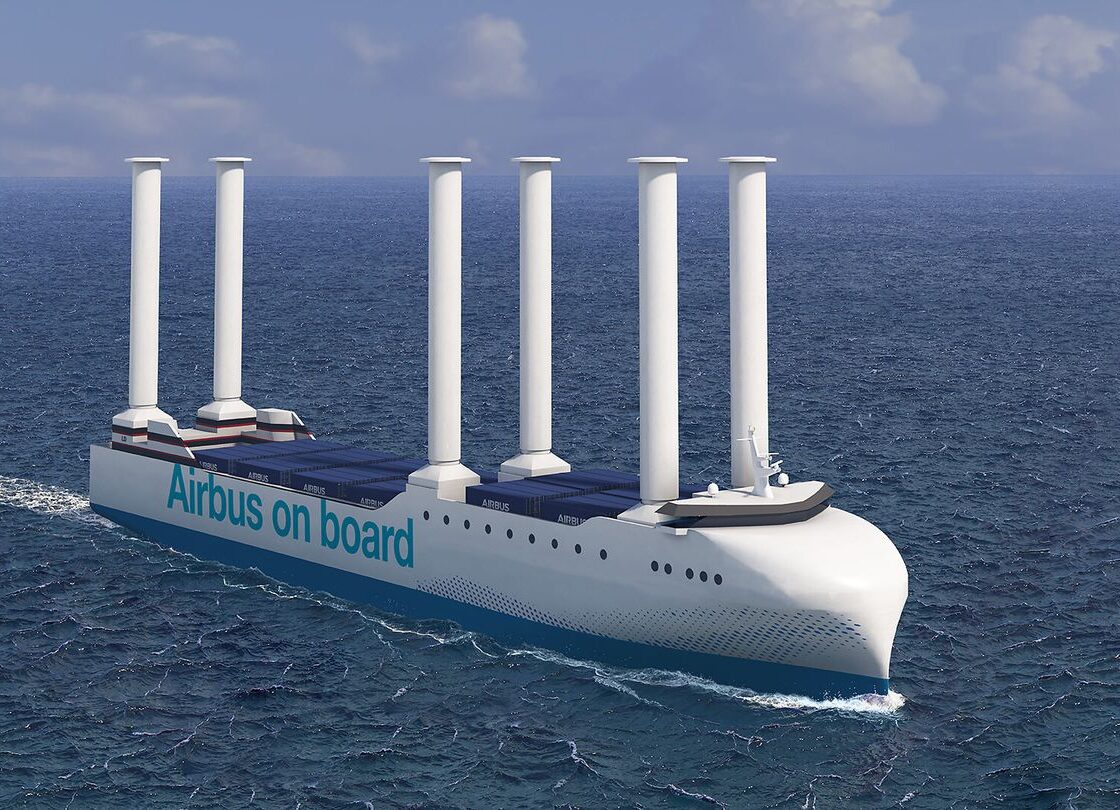
In less than three years times, European aircraft manufacturer Airbus will start transporting aircraft parts to an assembly part in the United States onboard massive ships which are partly powered by the wind.
The three new vessels are not, however, powered by traditional sails but instead use state-of-the-art Flettner rotors, which are essentially large, rotating cylinders that use the wind to generate lift and propel the ships forward.
Airbus won’t, however, be relying solely on the wind to get its aircraft parts 4,515 nautical miles across the Atlantic from Saint-Nazaire in France to its U.S. manufacturing plant in Mobile, Alabama.
The vessels will also come equipped with two dual-fuel engines that work on traditional maritime diesel oil and a more sustainable e-methanol. Airbus estimates the new ships will more than halve annual transatlantic CO2 emissions from 68,000 to 33,000 tonnes by 2030.
“The renewal of our marine fleet is a major step forward in reducing our environmental impact,” explained Airbus’ head of sustainability and environment, Nicolas Chrétien.
Shipowner Louis Dreyfus Armateurs will build, own and operate the three roll-on/roll-off ships on behalf of Airbus. Each Atlantic crossing is estimated to take around 18 days.
Mobile, Alabama, is Airbus’ first aircraft assembly in the United States, where A320 series aircraft and the A220 are currently assembled, mainly for airline customers in the Americas.
The A220 production line currently has the capability to assemble around 40 to 50 aircraft per month, but Airbus hopes the new ships will help increase assembly capacity to as many as 75 aircraft per month.
Each ship will have the capacity to transport around seventy containers and six single-aisle aircraft sub-assembly sets which include the wings, fuselage, engine pylons, and horizontal and vertical tail planes.
The ships currently used by Airbus only have the capacity to carry three to four aircraft sets.
Related
Mateusz Maszczynski honed his skills as an international flight attendant at the most prominent airline in the Middle East and has been flying ever since... most recently for a well known European airline. Matt is passionate about the aviation industry and has become an expert in passenger experience and human-centric stories. Always keeping an ear close to the ground, Matt's industry insights, analysis and news coverage is frequently relied upon by some of the biggest names in journalism.








”Each Atlantic crossing is estimated to take around 18 days.” – Da,m 18 days. 18 days is a long time…
Surely the 50 aircraft per month must be per year. Maybe a translation error?